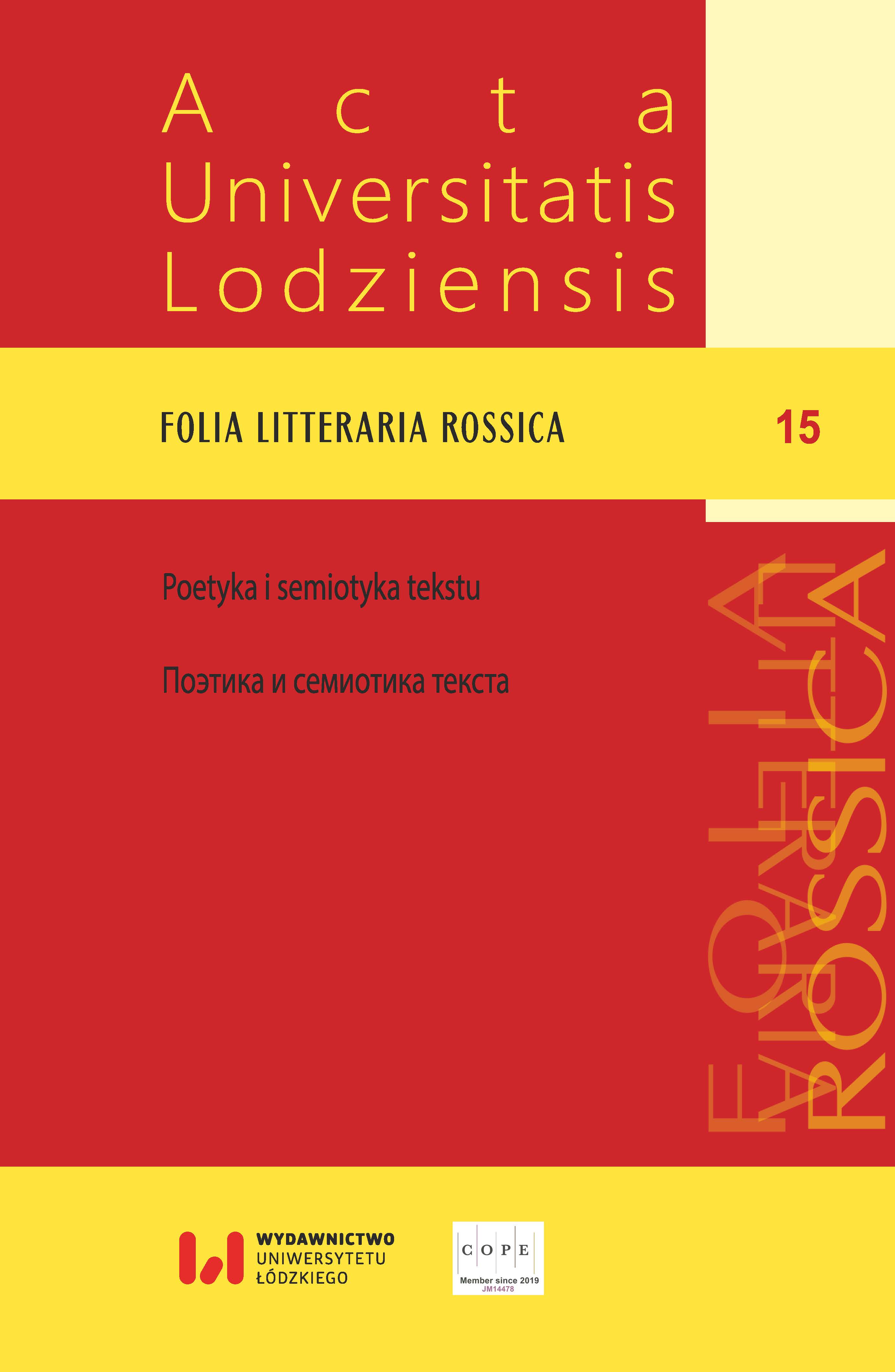The Theme of Metempsychosis in the Poetry of Nikolay Gumilev
DOI:
https://doi.org/10.18778/1427-9681.15.10Keywords:
metempsychosis, lyrics by Nikolay Gumilev, poetics of memory, synchronic concepts of cultureAbstract
The article is devoted to Nikolay Gumilev’s appeal to the topic of recalling past incarnations, understood as the mystical ability of memory. This topic was popular in the period of the Silver Age in Russian literature. Despite the acmeist’s refusal to turn to mystical experience, the theme of rebirth and memories of past lives was realised by Gumilev throughout his entire work, i.e. starting with the book Romantic Flowers and up to a number of poems from the book Pillar of Fire. It is from this point of view that the poems under the titles of “Credo”, “Adam`s Dream”, “Eternal”, “Primal Memory”, “A Memory”, “The Lost Tram”, and others are considered. These texts are somewhat similar to each other at the level of motivational organisation: the depiction of earthly life as a dream and death as the awakening; the motif of ringing and harmony, referring to the theme of creativity; the motif of sensory perception of the earthly world through physical love; or the motif of the path and life as a directed movement. In the early texts, memories of past lives and existing before birth are painted in harmonious tones, while in later poems it is eschatological motifs that come to the fore. In addition, in the poems titled “A Memory” and “The Lost Tram”, the theme of network psychosis is metaphorised; it becomes a way to tell about the experience of one lived life, included in a wide mythopoetic context. It is interesting that the mystical property attributed to memory to overcome the boundaries of life is consistent with a number of modernist concepts of culture (Aby Warburg, Thomas Stearns Eliot, and Osip Mandelstam), implying the resurrection of past eras. Thus, Gumilev’s appeal to the theme of metempsychosis can be placed in the context of the idea of ‘cultural synchronicity’.
Downloads
References
Delich, Irina. Nikolai Gumilev. In: Istoriia russkoi literatury, XX vek: Serebrianyi vek, ed. Zh. Niva. Moskva, 1995: 488–501.
Google Scholar
Eliot, Tomas S. Edinstvo evropeiskoi kultury. In: K opredeleniyu poniatiya kultury: zametki, transl. E. Zhiglevich. London, 1968: 144–165.
Google Scholar
Gumilev, Nikolai S. “Nasledie simvolizma i akmeizm”. Apollon. No. 1 (1913): 42–45.
Google Scholar
Gumilev, Nikolai S. Polnoe sobranie sochinenii: v 10 t. Vol. 1–7, ed. N. N. Skatov. Moskva, 1998.
Google Scholar
Kazantseva, Anastasiya A. Anna Akhmatova i Nikolai Gumilev: dialog dvukh poetov. Sankt-Peterburg, 2004.
Google Scholar
Krol, Yurii L. “Ob odnom neobychnom tramvainom marshrute (‘Zabludivshiisia tramvai’ N. S. Gumileva)”. Russkaya literatura. No. 1 (1990): 208–218.
Google Scholar
Magomedova, Dina M. “Ob odnoi pushkinskoi alliuzii v ‘Zabludivshemsia tramvae’ N. S. Gumileva”. Novyi filologicheskii vestnik. No. 2 (2007): 225–228.
Google Scholar
Mandelshtam, Osip E. Polnoe sobranie sochinenii i pisem: v 3 t. Vol. 2. Moskva, 2010.
Google Scholar
Nevedomskaya, Vera. Vospominaniya o Gumileve i Akhmatovoi. In: Nikolai Gumilev v vospominaniyakh sovremennikov, ed. V. Kreid. Parizh; New-York; Düsseldorf, 1989: 151–159.
Google Scholar
Odoevtseva, Irina. Na beregakh Nevy. Moskva, 1988.
Google Scholar
Pushkareva, Svetlana V. “Pamiat kak element kosmogonicheskogo mifa v sbornike N. S. Gumileva ‘Ognennyi stolp’”. Vestnik Tverskogo gosudarstvennogo universiteta. Seriia Filologiya. No. 3 (2013): 337–342.
Google Scholar
Shakhmatova, Elena V. “Metempsikhoz v kulture Serebrianogo veka”. Religiovedenie. No. 1 (2009): 183–196.
Google Scholar
Varburg, Abi. Velikoe pereselenie obrazov: issledovanie po istorii i psikhologii vozrozhdeniya antichnosti, transl. from German E. Kozina; transl. from Italian N. Bulakhova; transl. from Latin D. Zakharova. Sankt Peterburg, 2008.
Google Scholar
Zobnin, Yurii V. “‘Zabludivshiisya tramvai’ N. S. Gumileva (k probleme deshifrovki ideino-filosofskogo soderzhaniya teksta)”. Russkaya literatura. No. 4 (1993): 176–192.
Google Scholar
Downloads
Published
How to Cite
Issue
Section
License

This work is licensed under a Creative Commons Attribution-NonCommercial-NoDerivatives 4.0 International License.












